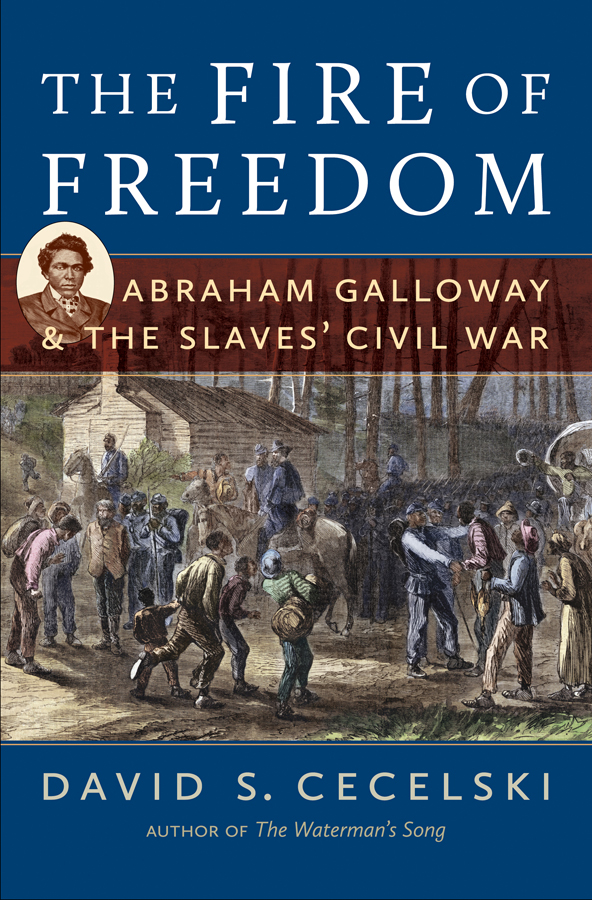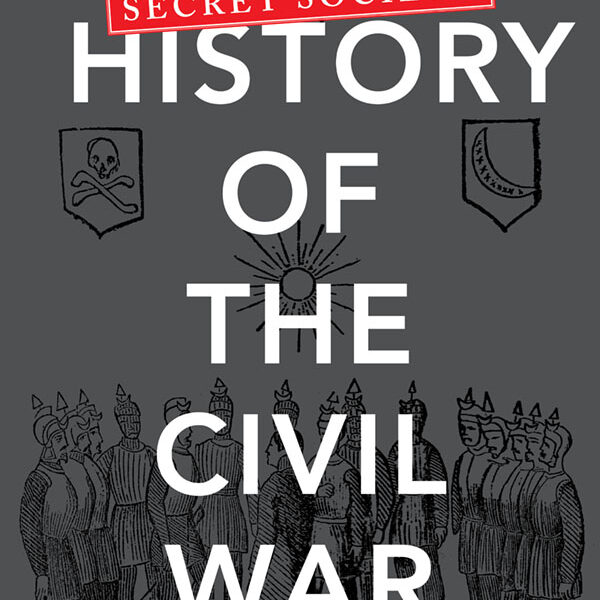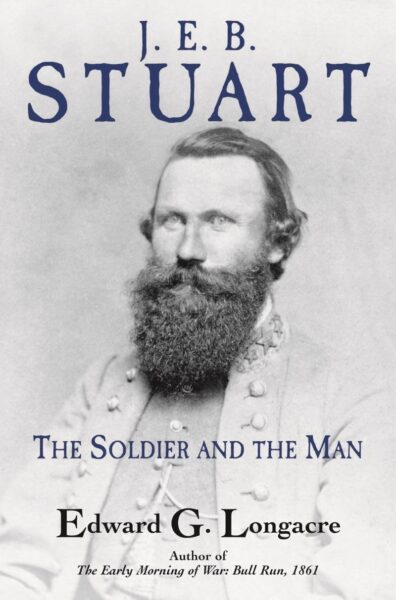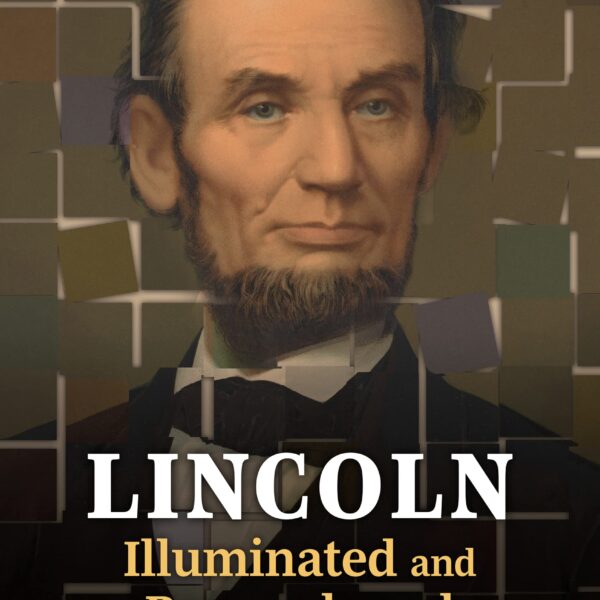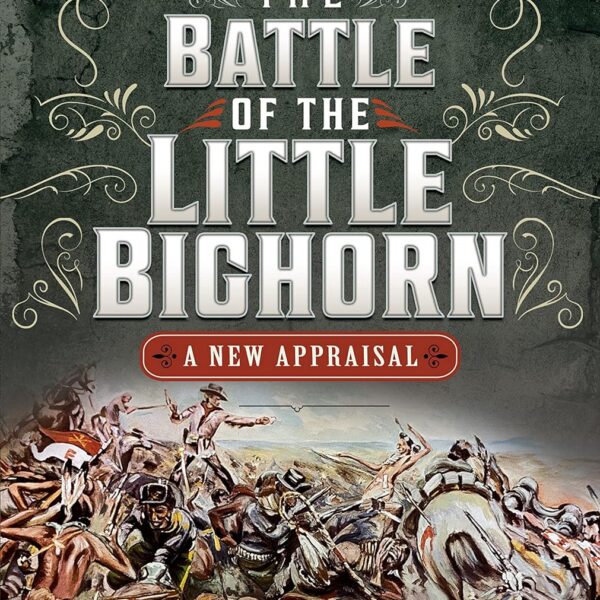A difficult scholarly challenge is rescuing from the dustbin of the past persons of historical importance, who for whatever reason have fallen into obscurity. This task is ably handled by David S. Cecelski in his book, The Fire of Freedom: Abraham Galloway & The Slaves’ Civil War. Cecelski examines the life of Abraham Galloway, born a slave in coastal North Carolina, who became one of the most important African-American leaders in that state during the Civil War and Reconstruction.
Yet the author writes not just about Galloway, but seeks to place him within the wider milieu of the black struggle, first for freedom from slavery during the Civil War and then the postwar battle for equality, both in North Carolina and nationally. This is a wise approach given the lack of sources on Abraham Galloway, who for a long time was a poorly remembered figure because of his early death and the way that many African Americans, especially at the state and local level, were written out of the history of the Civil War and Reconstruction in the late nineteenth and early twentieth century. Indeed, this book is as much about the world of black activism in North Carolina and nationally in the 1860s, as it is a biography of Abraham Galloway.
In The Fire of Freedom, David S. Cecelski demonstrates much in common with Steven Hahn and other scholars, who have engaged in recovering the history of black political activism in nineteenth-century America. Cecelski finds the black residents of 1860s’ North Carolina, especially in the coastal counties that came under Union occupation early in the Civil War, politically astute and ready to take whatever steps within their power to destroy slavery and gain equality in the wake of emancipation. Speaking of Edward S. Kinsley, a wealthy Boston merchant who came to Union-occupied North Carolina in 1863 at the behest of Massachusetts Governor John Andrew to help recruit black regiments, Cecelski writes:
Instead of docility, Kinsley witnessed a posture of militancy and defiance. Instead of freedpeople who were fragmented and disorganized, he saw recently liberated slaves who were carefully organized, with a command structure and strong leadership. Instead of their being confused by their first taste of freedom, he saw them acting as thoughtful planners and savvy political strategists. Instead of unquestioning former slaves displaying unquestioning loyalty to the Union cause, he saw freedpeople attempting to shape the Union cause. Instead of ex-slaves imbibing the politics of white abolitionists or Republicans, he saw people charting their own political course. Instead of black women being spectators to the war, he saw women such as Mary Ann Starkey at center stage (xvii).
And David S. Cecelski finds Abraham Galloway at the heart of black political activism in North Carolina during and following the Civil War. Born of a rebellious white father of the planter class and a slave mother, Galloway had the rare experience of being acknowledged by his father who helped and protected his son as much as he could while he was growing up. By his early adult years, Galloway was a relatively privileged artisan living apart from his owner in exchange for a portion of his earnings. After a daring escape by sea from the South, he made his way to Canada, but soon returned to the United States in the years just before the Civil War to become an operative of the radical abolitionist underground.
After the war began, he became of a spy for the Union army, working personally for Gen. Benjamin Butler, first around Fortress Monroe in Virginia and then in Louisiana. In both cases, he would make dangerous trips behind Confederate lines, using his intimate knowledge of slave life to avoid capture, gather intelligence, and report back. Betrayed and abandoned by retreating Union forces in the vicinity of Vicksburg in 1862, he was captured by the Confederates, but escaped and somehow made his way from the Mississippi Valley to the eastern seaboard, resurfacing in 1863 as an underground black leader in Union-occupied North Carolina around New Bern where he had grown up. It was here that Abraham Galloway forced Edward S. Kinsley to agree to his terms before he would allow black men there to join the Union Army.
Cecelski then chronicles the rise of Galloway, the politician. Although he continued to conduct intelligence missions for the Union Army in North Carolina, Abraham Galloway increasingly transitioned later in the Civil War to a radical black political leader demanding freedom and equal rights. He participated in important African-American political gatherings nationally and in his home state, and after the war was a delegate to the state constitutional convention called after Congress took control of Reconstruction in 1867 and then served as a member of the North Carolina legislature before suddenly falling ill and dying suddenly, seemingly of natural causes, in 1870 on the cusp of Democrats recapturing control of the state.
David S. Cecelski has done an impressive job at uncovering the often little-known and disparate historical sources on his subject, a task complicated by their paucity and Galloway’s sometimes clandestine existence, which tended not to leave a paper trail. Cecelski’s approach on capturing his subject’s milieu is a wise one as it allows him to intelligently fill in the gaps where Abraham Galloway left no record. Still, too often the author is left to speculate about his subject, which even though it is done intelligently, leaves the reader with a longing for the book that might have been possible if Galloway had been better documented in history. That is not Cecelski’s fault. If he ever is at fault as an author, it is in small things, such as poorly characterizing the background of the Union military governor in North Carolina in 1862-1863, Edward Stanly, stating, “Before the war, Stanly had been a prominent local slaveholder” (74). While Stanly certainly owned slaves at some point in the antebellum period and was a prominent Whig politician in North Carolina in the 1830s and 1840s, with the abrupt collapse of the party’s fortunes in the state following the Compromise of 1850, Edward Stanly moved to California where he practiced law until called upon by Lincoln to serve as military governor in his home state.
Still, on the whole, The Fire of Freedom is a well-written book and a fine contribution to Civil War studies and the developing literature of African-American political activism in the nineteenth century. It will be a nice addition to the book collections of both scholars and Civil War enthusiasts alike.
Donald R. Shaffer is the author of After the Glory: The Struggles of Black Civil War Veterans (Kansas, 2004) and a co-author of Voices of Emancipation: Understanding Slavery, the Civil War, and Reconstruction through the U.S. Pension Bureau Files (NYU, 2008). He teaches college-level history online and maintains a regular blog at: cwemancipation.wordpress.com/.
